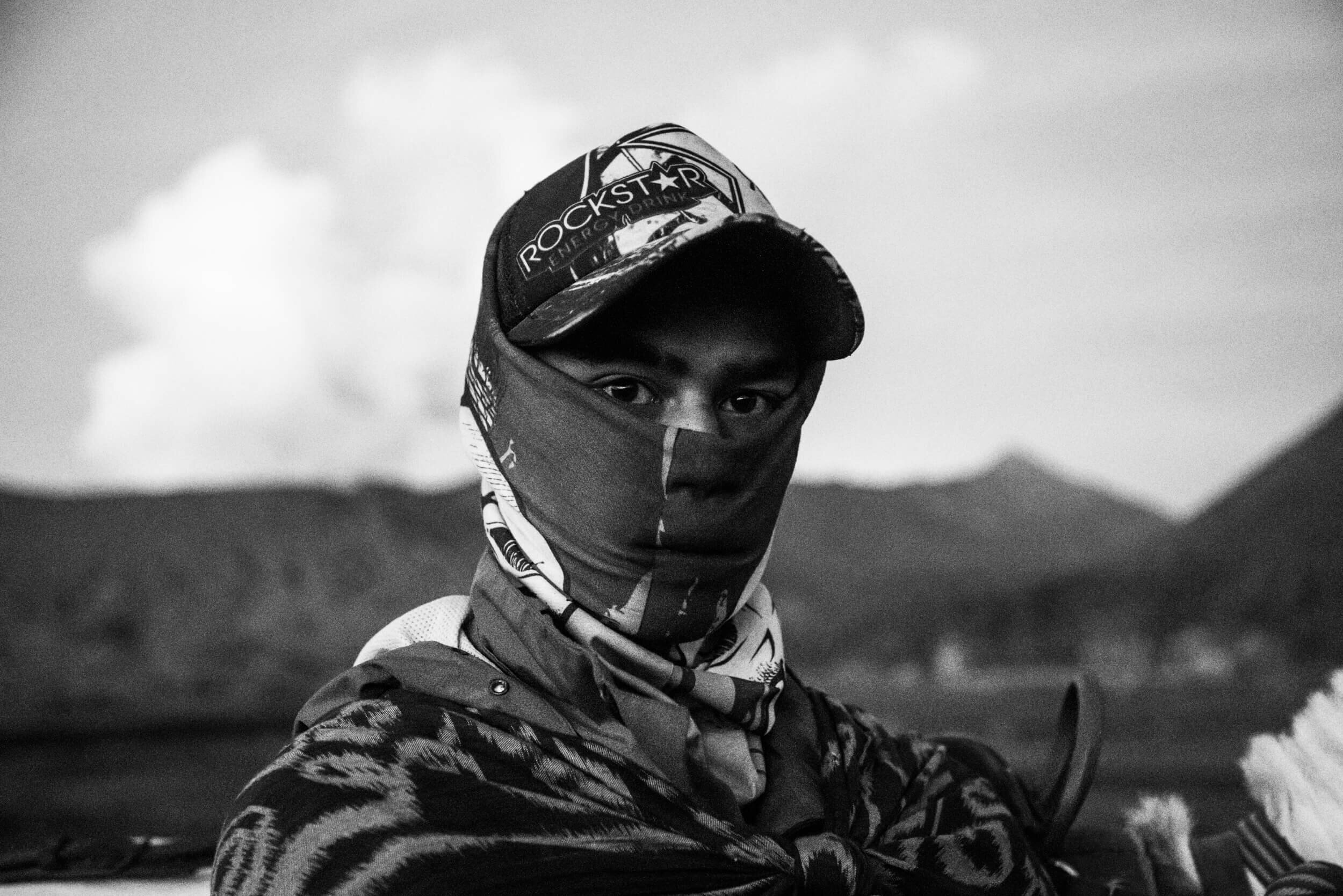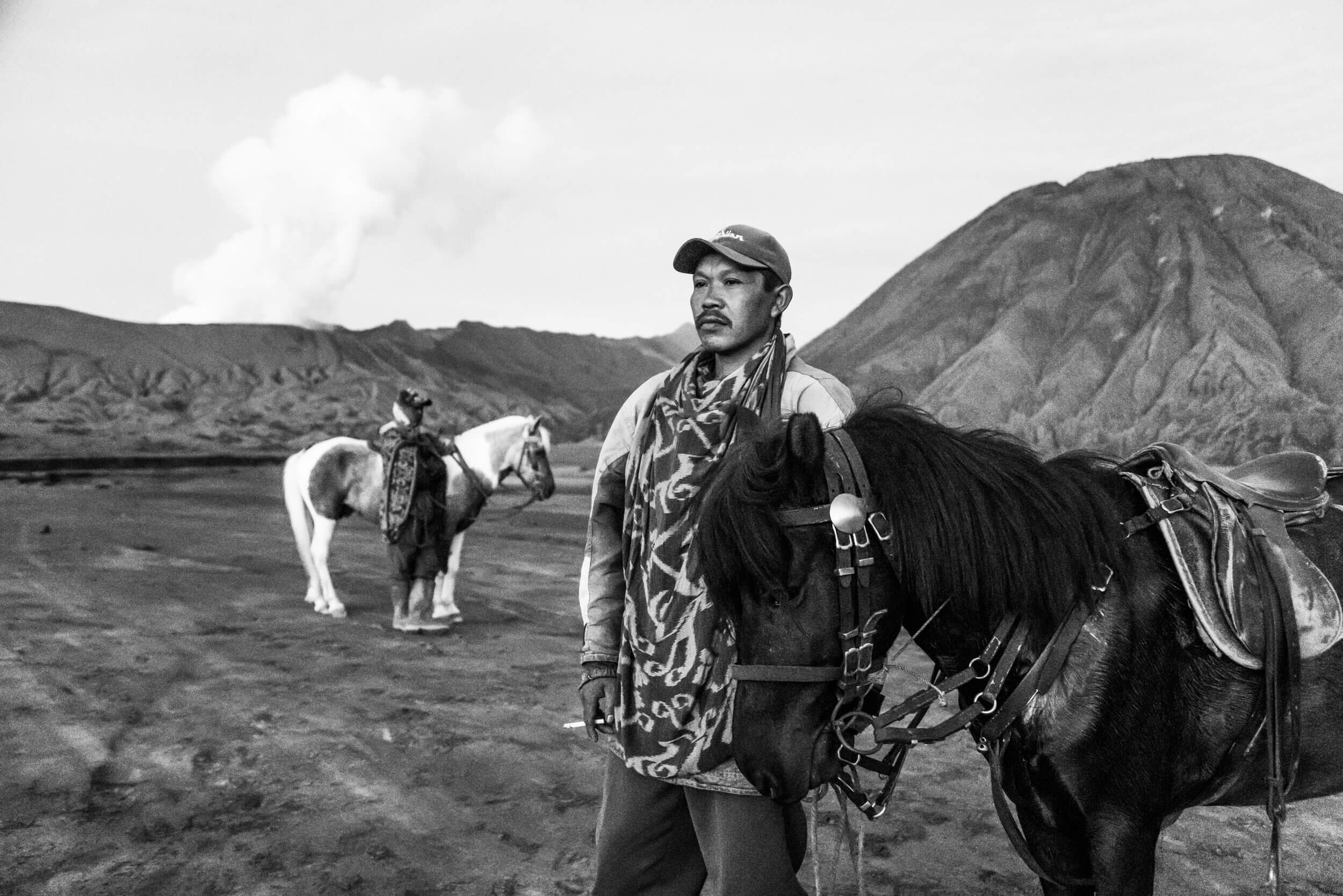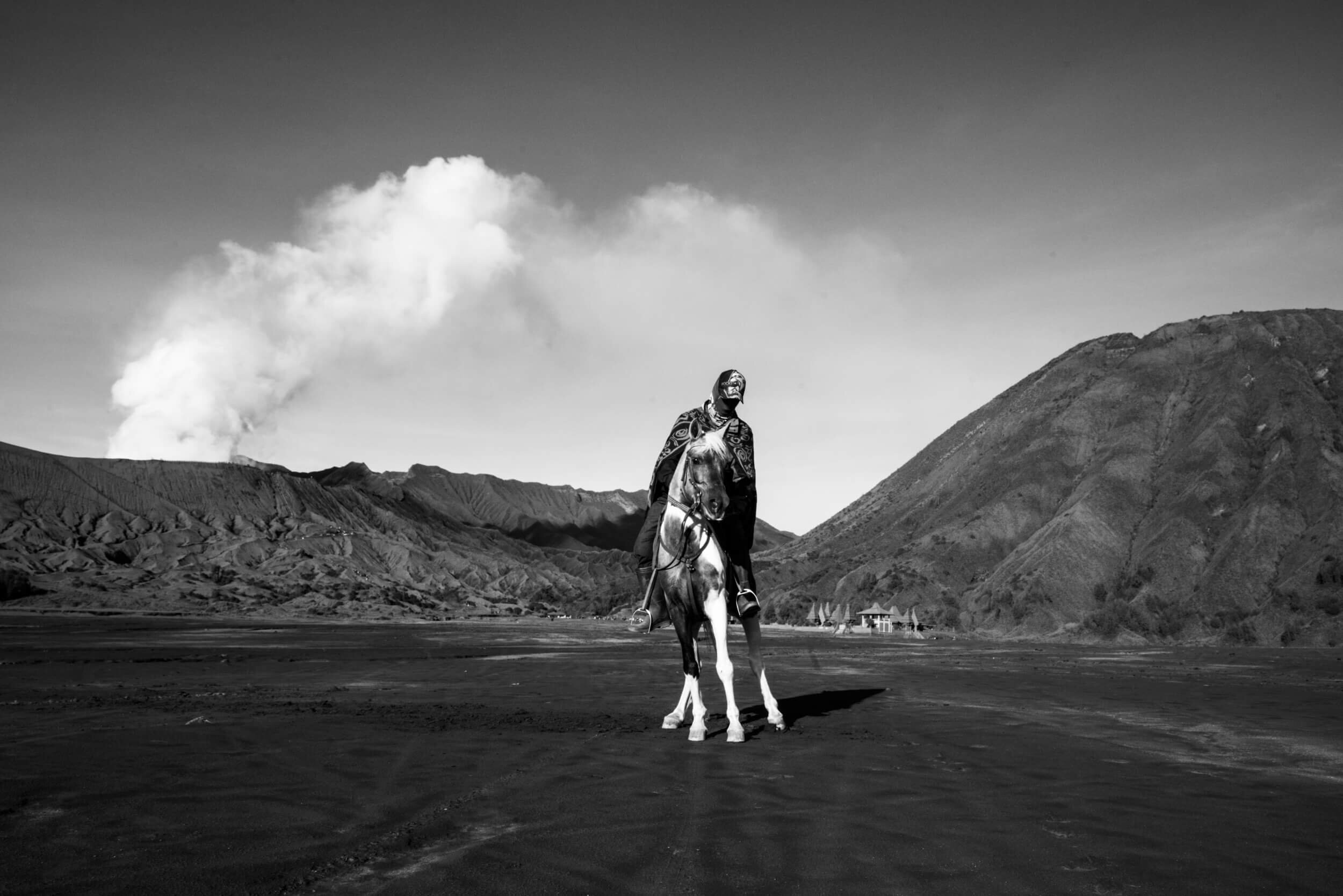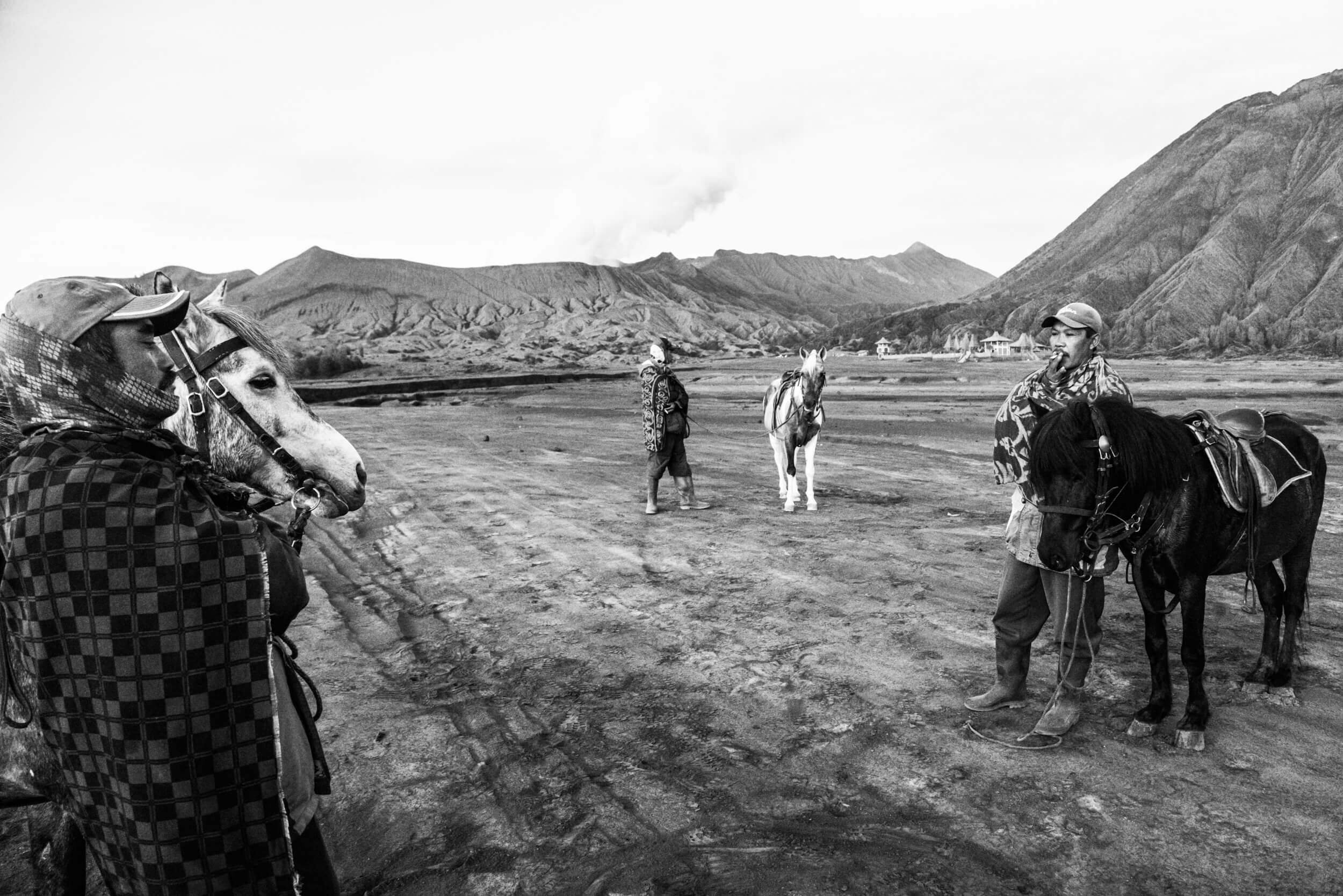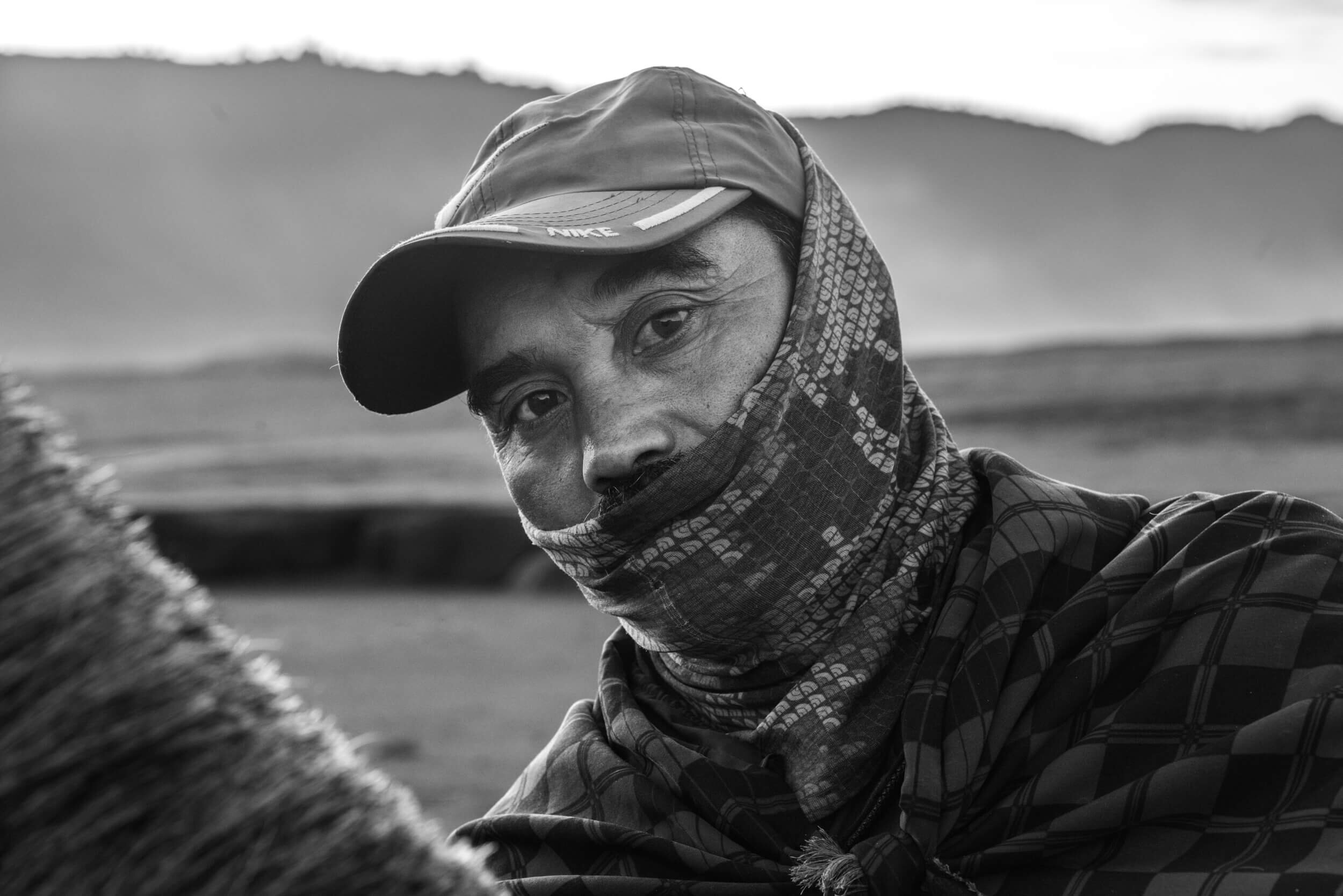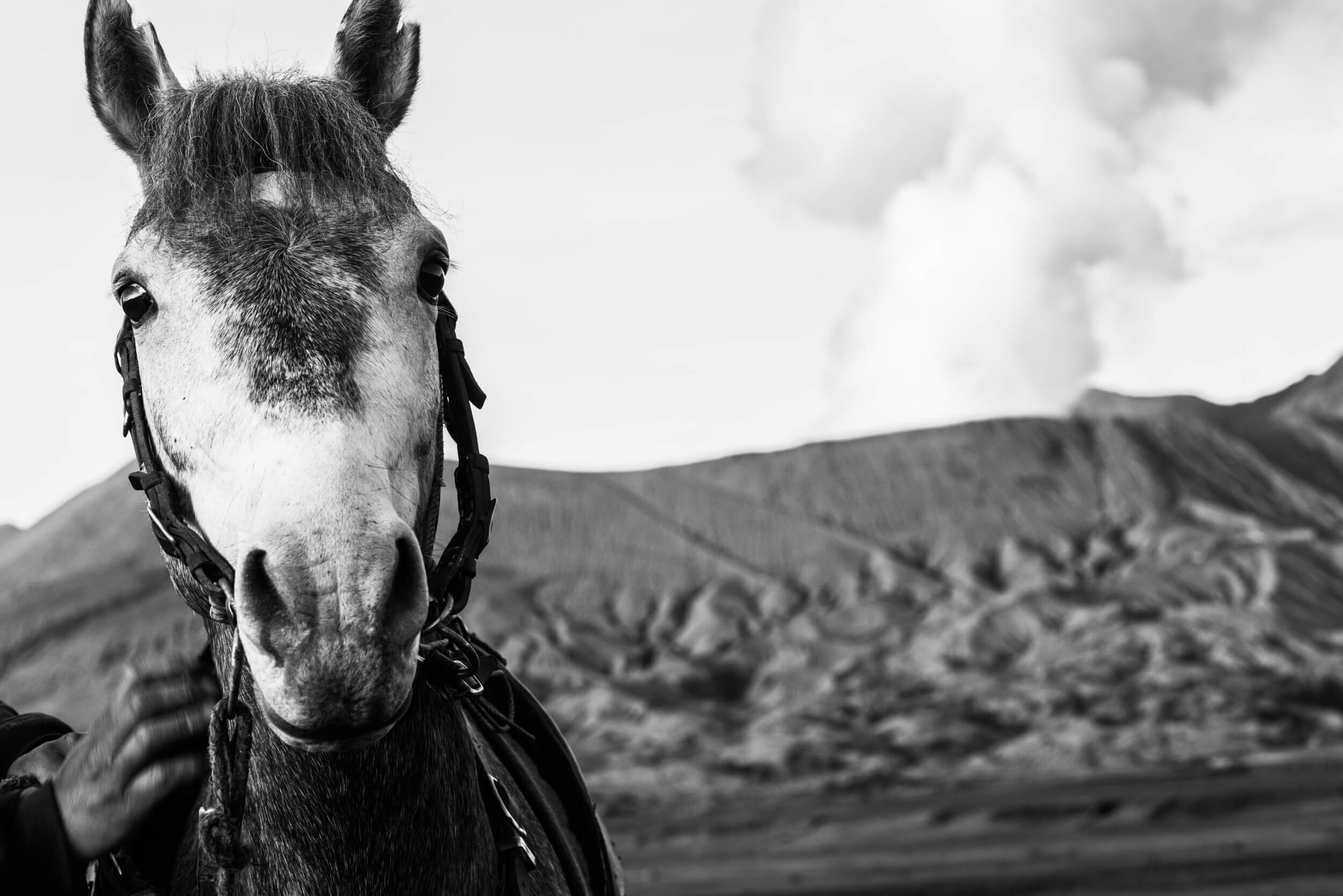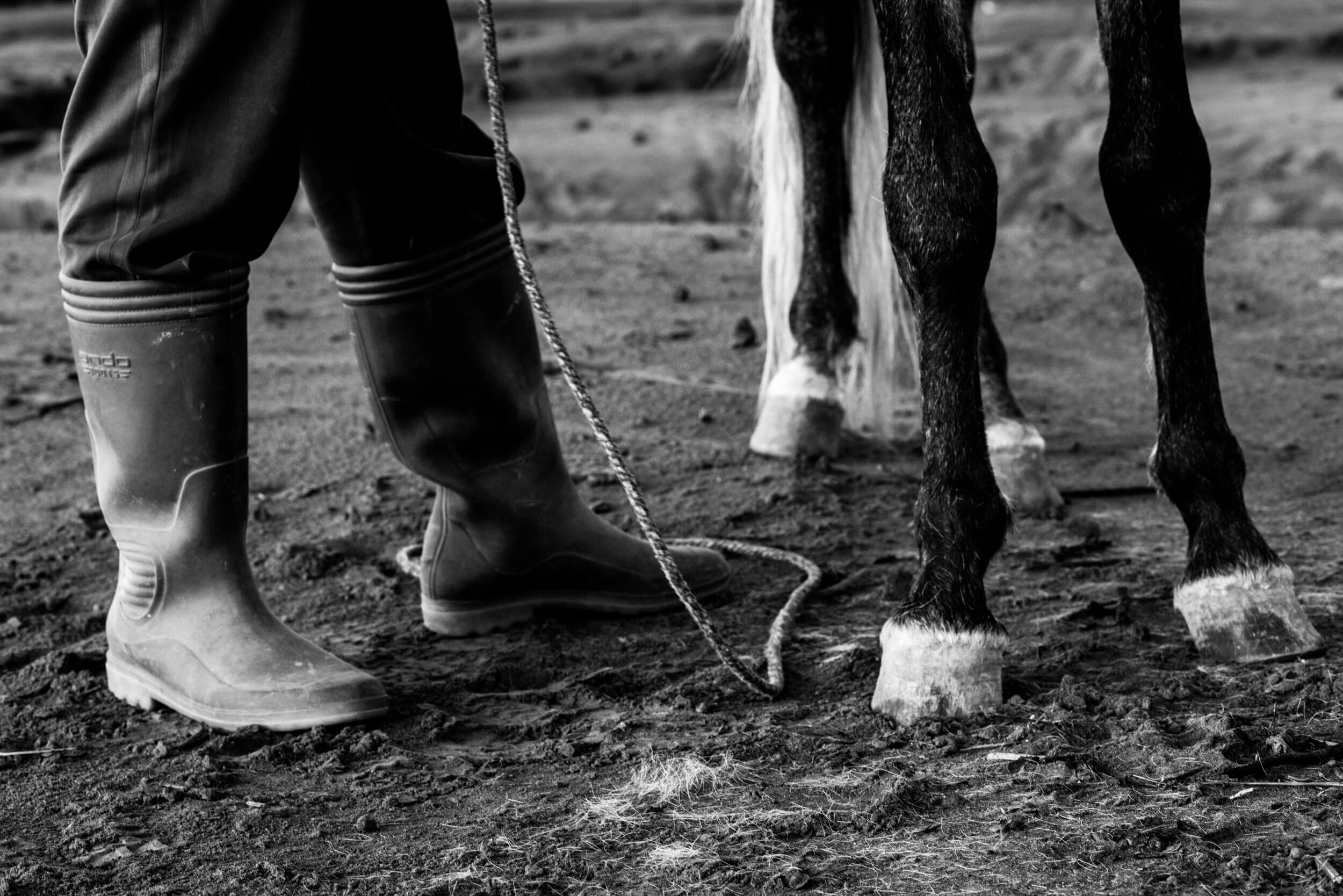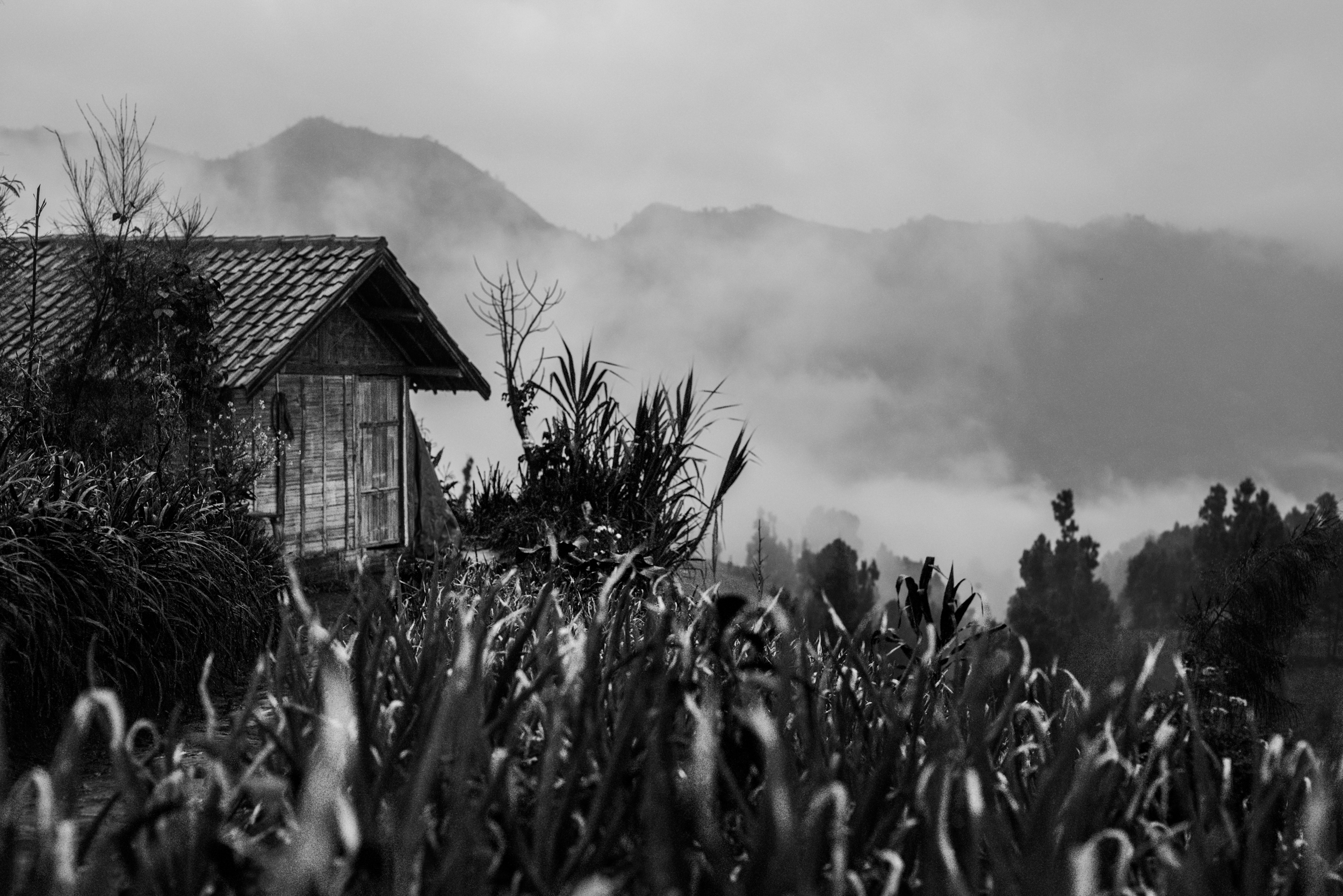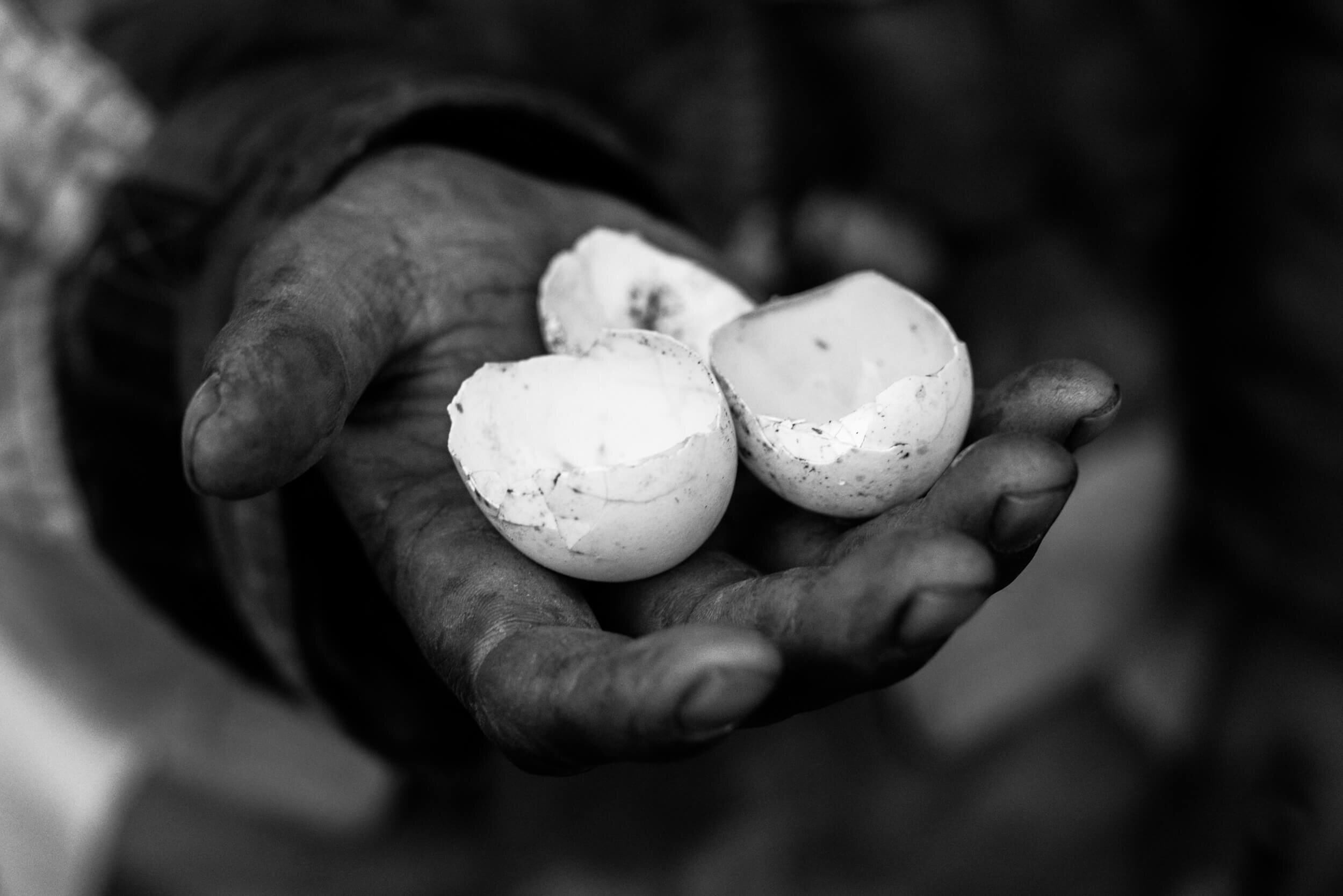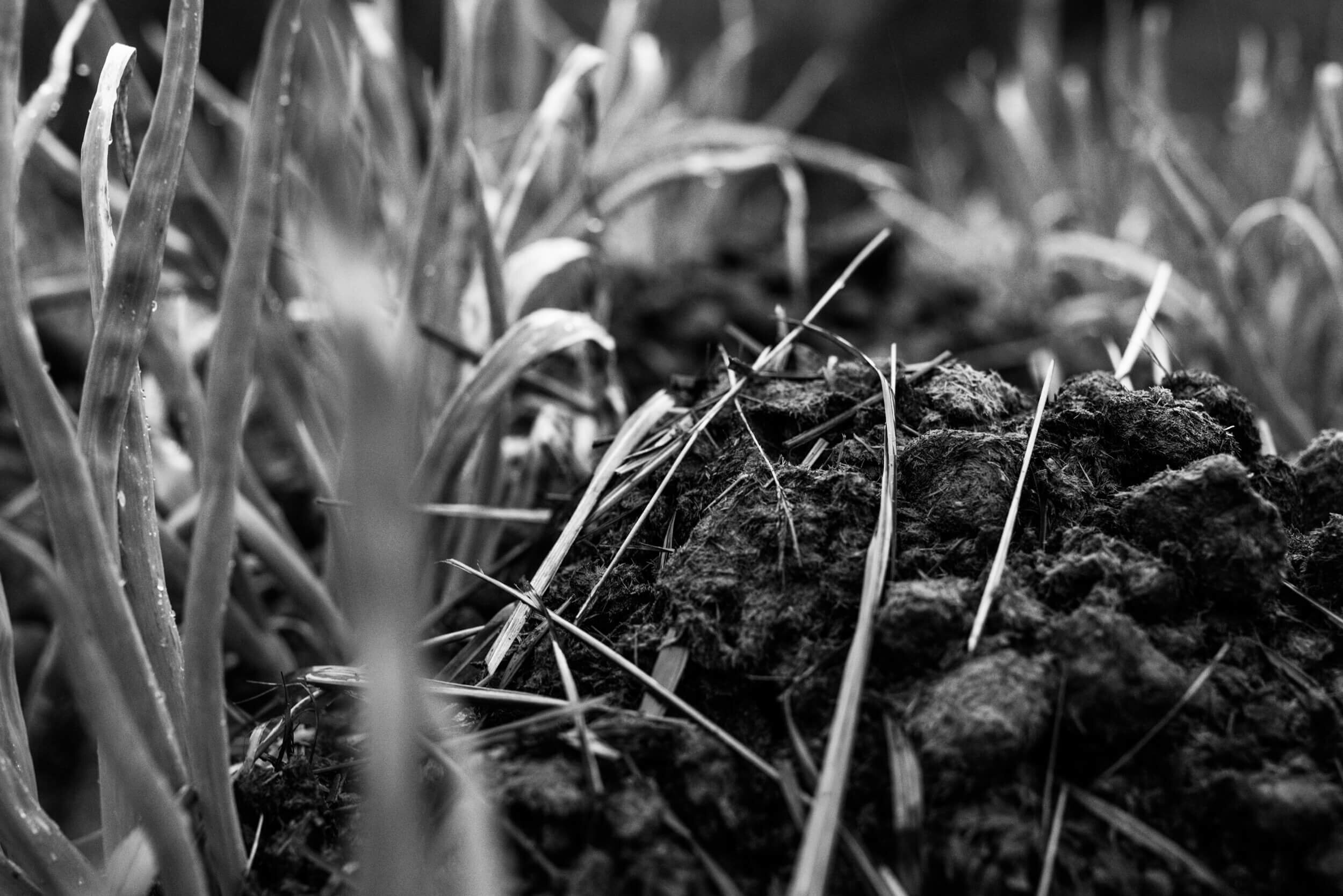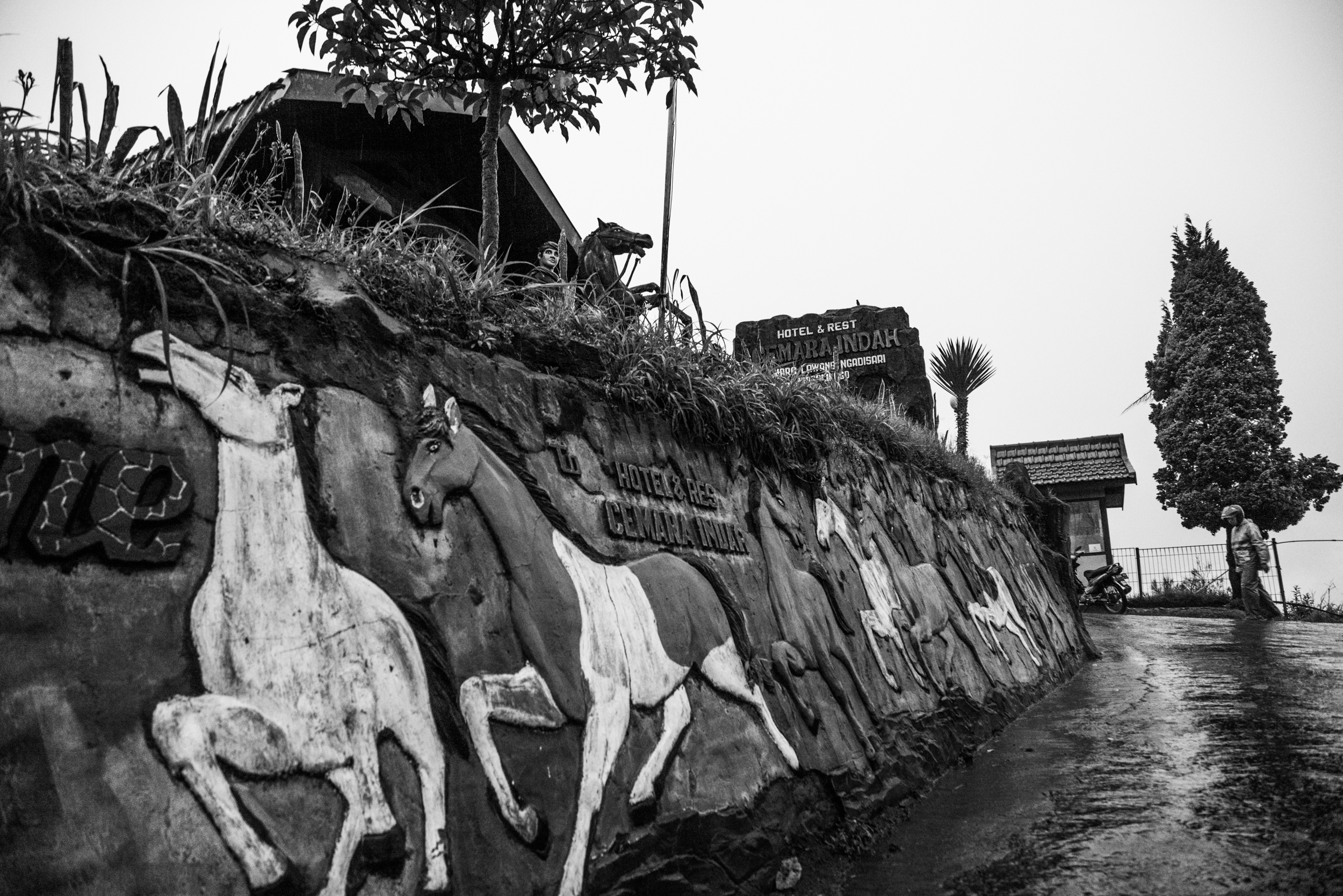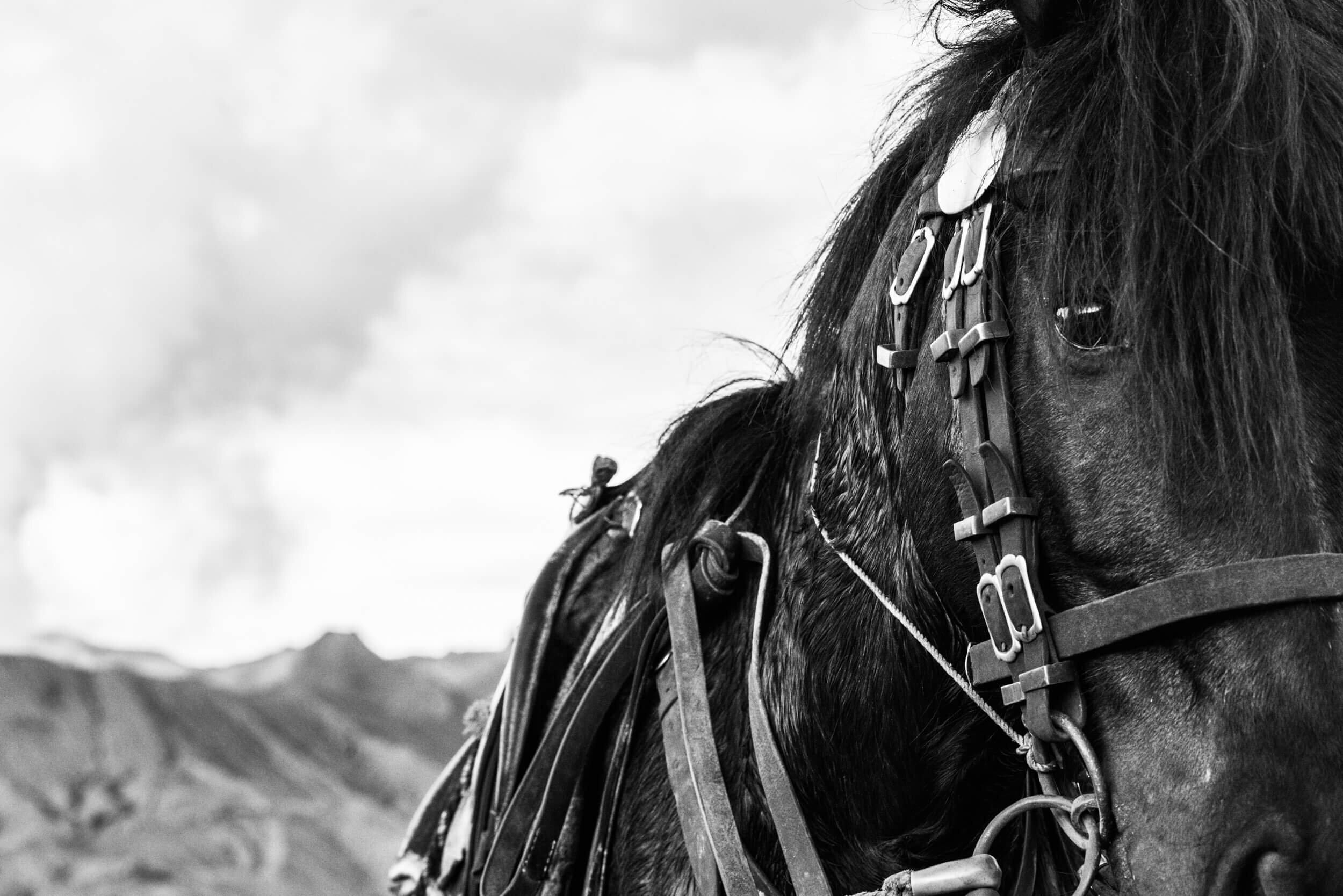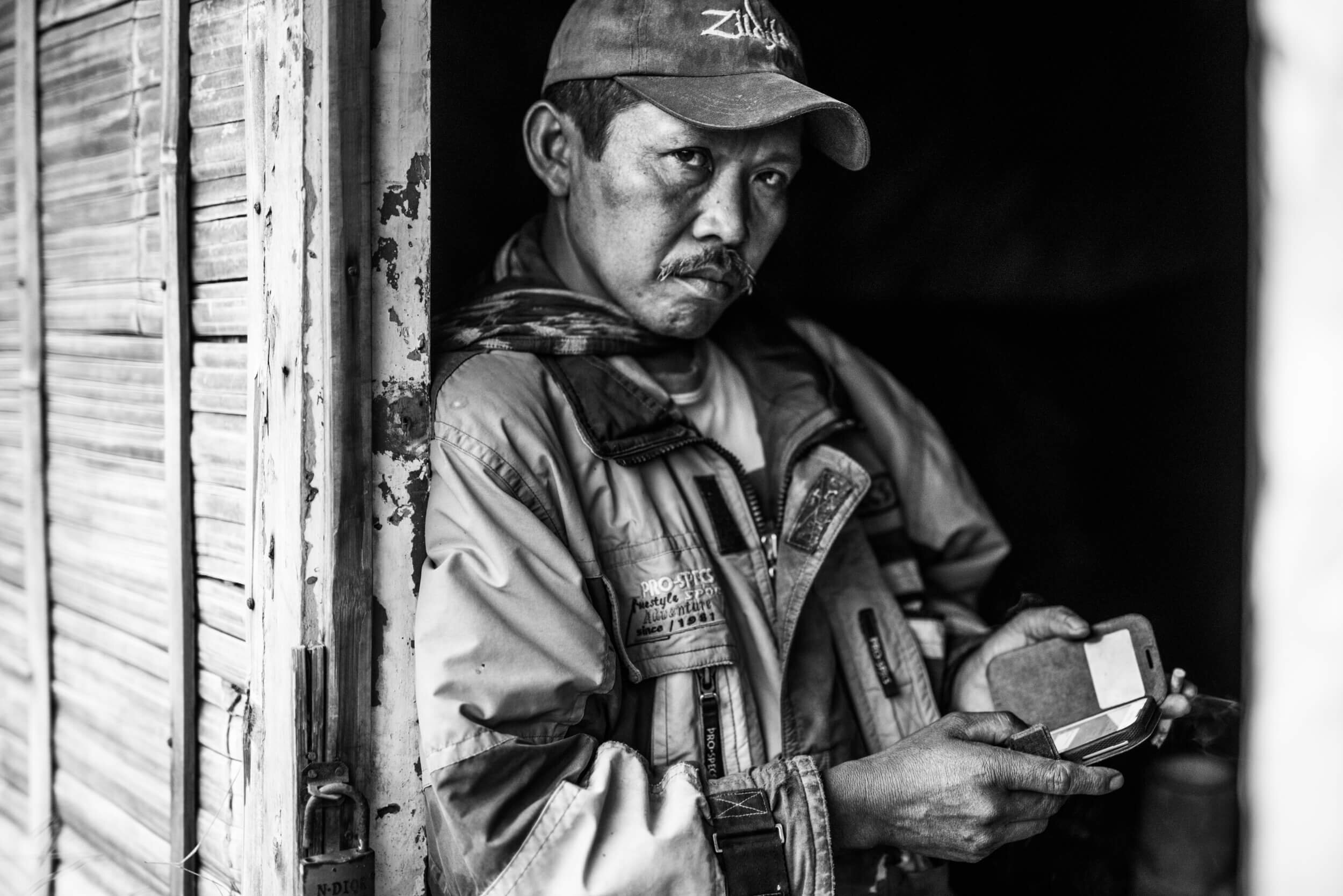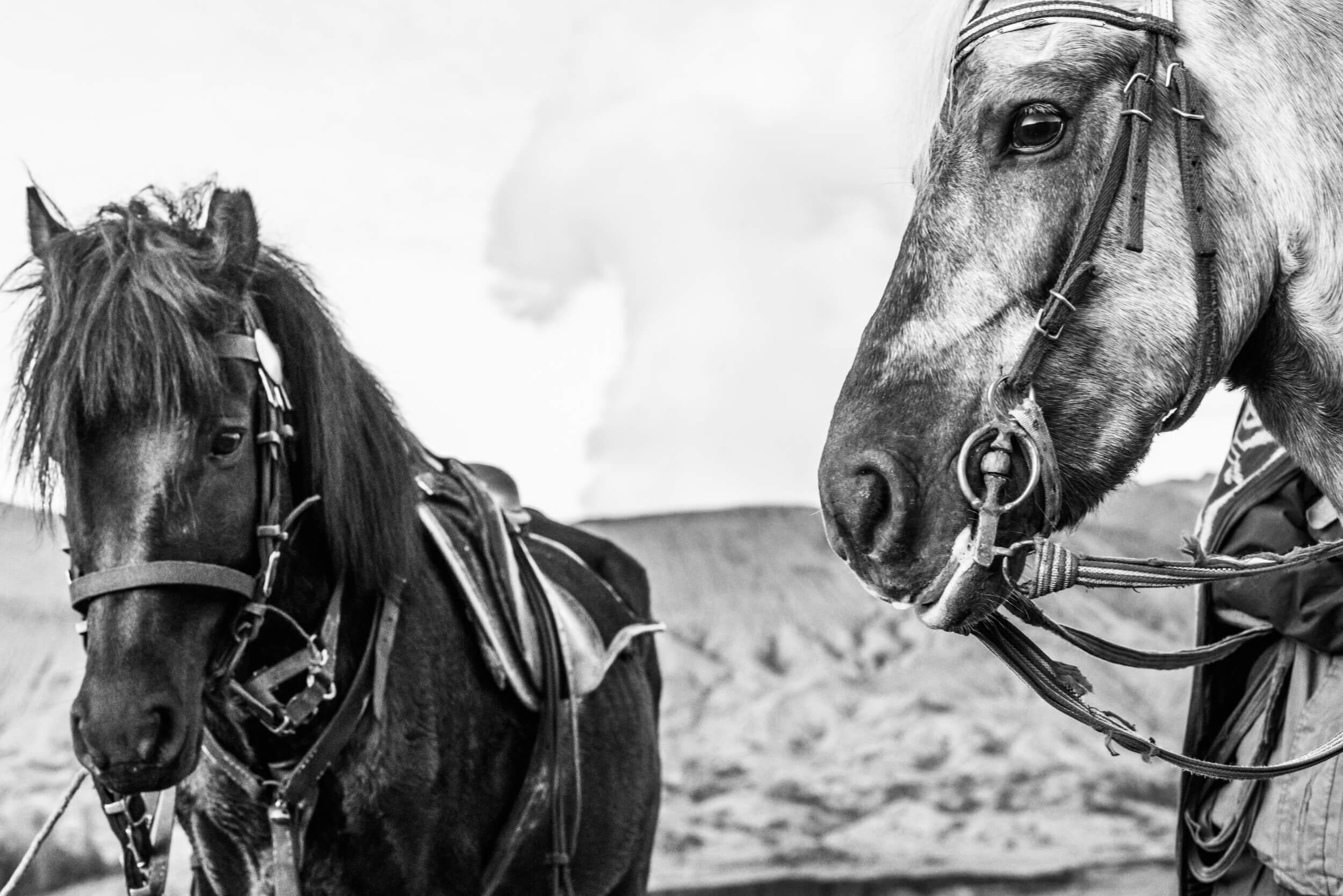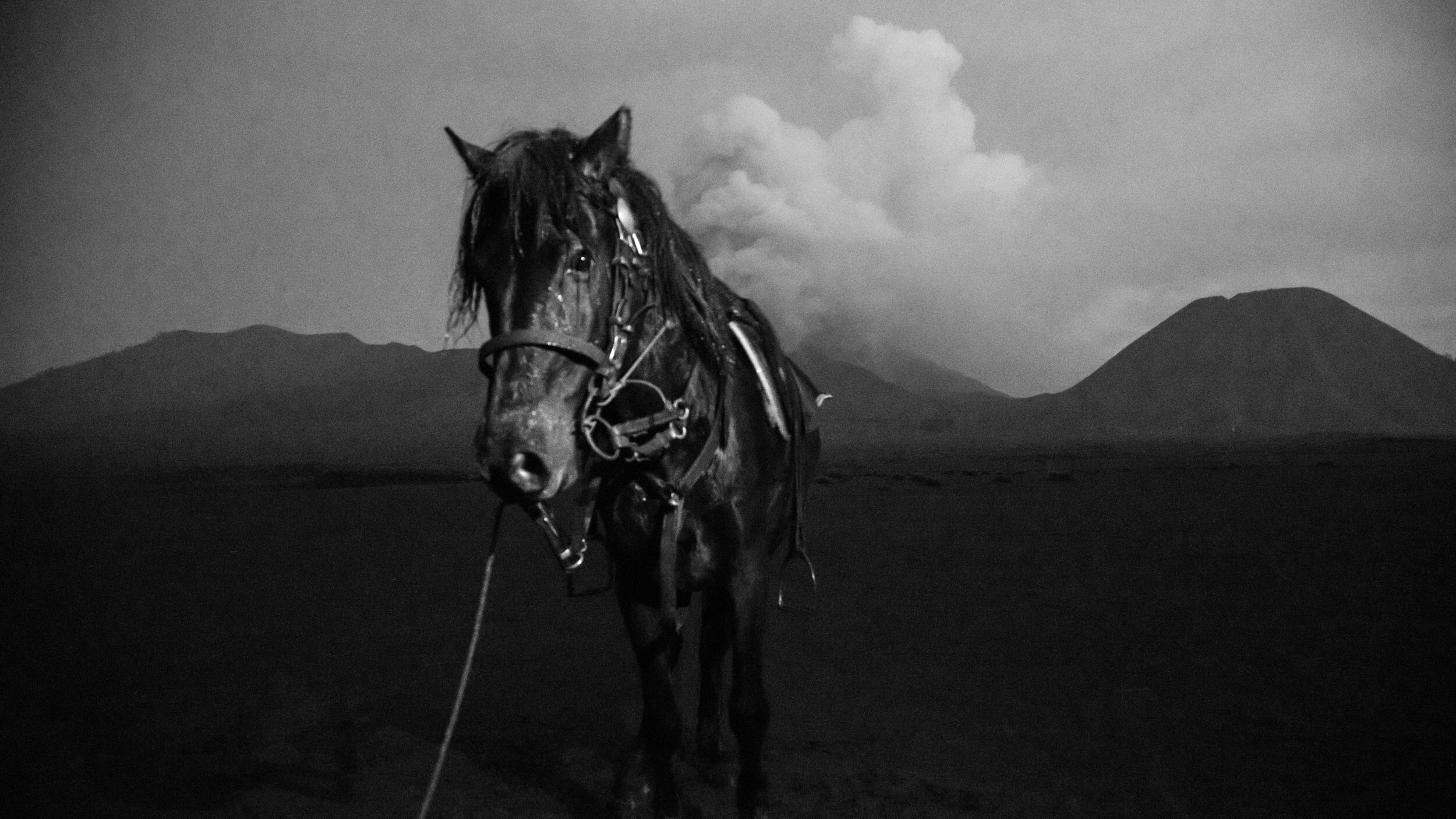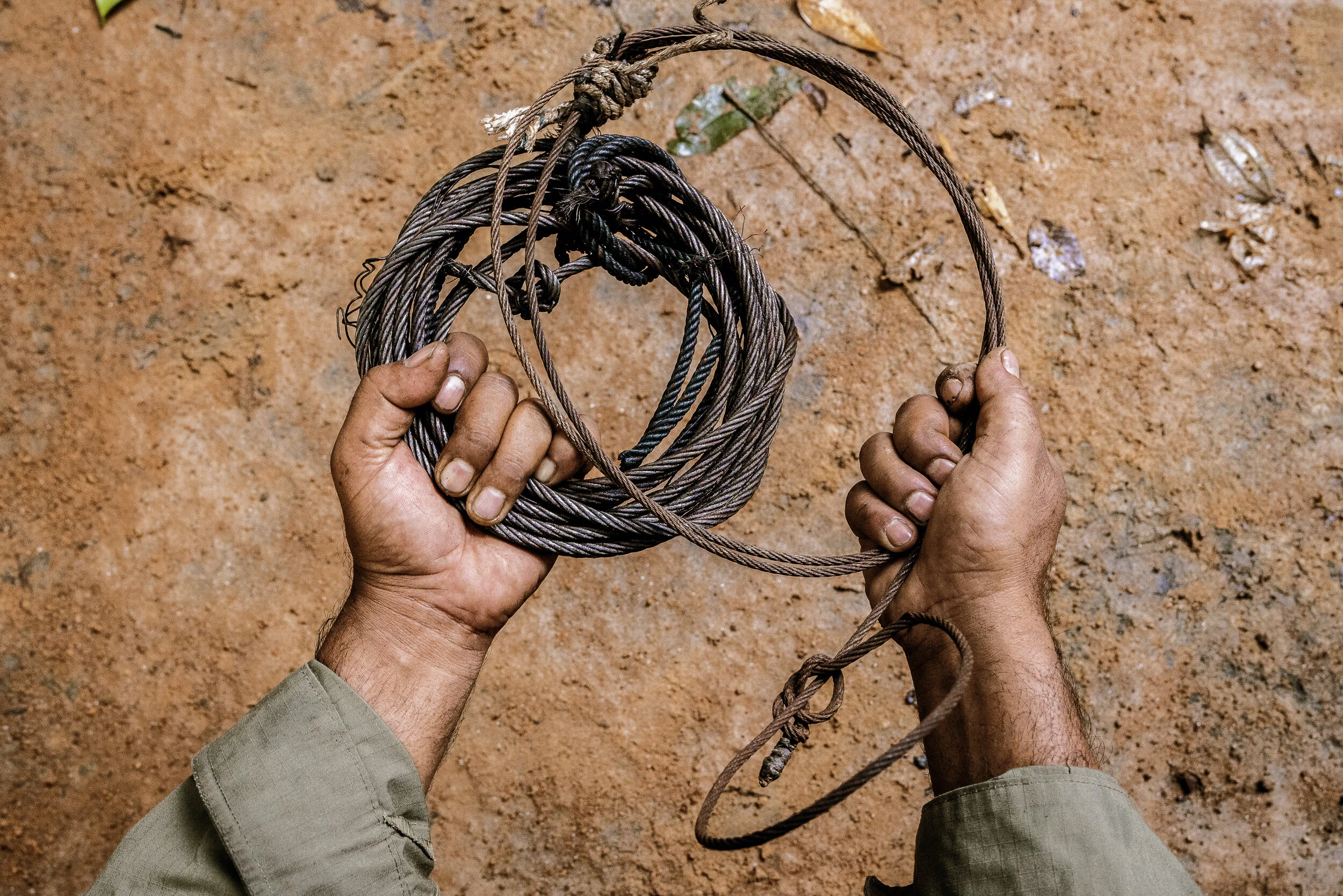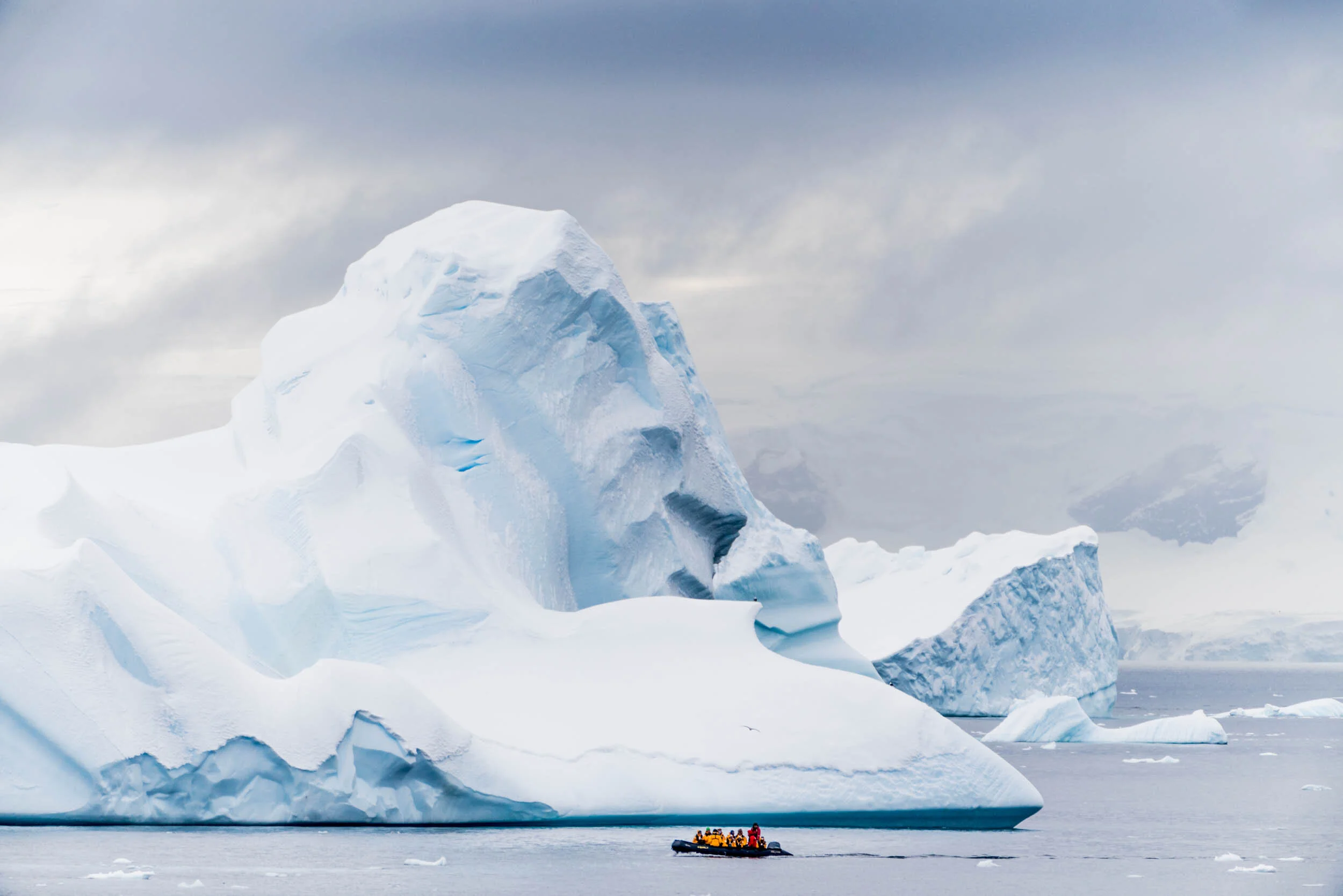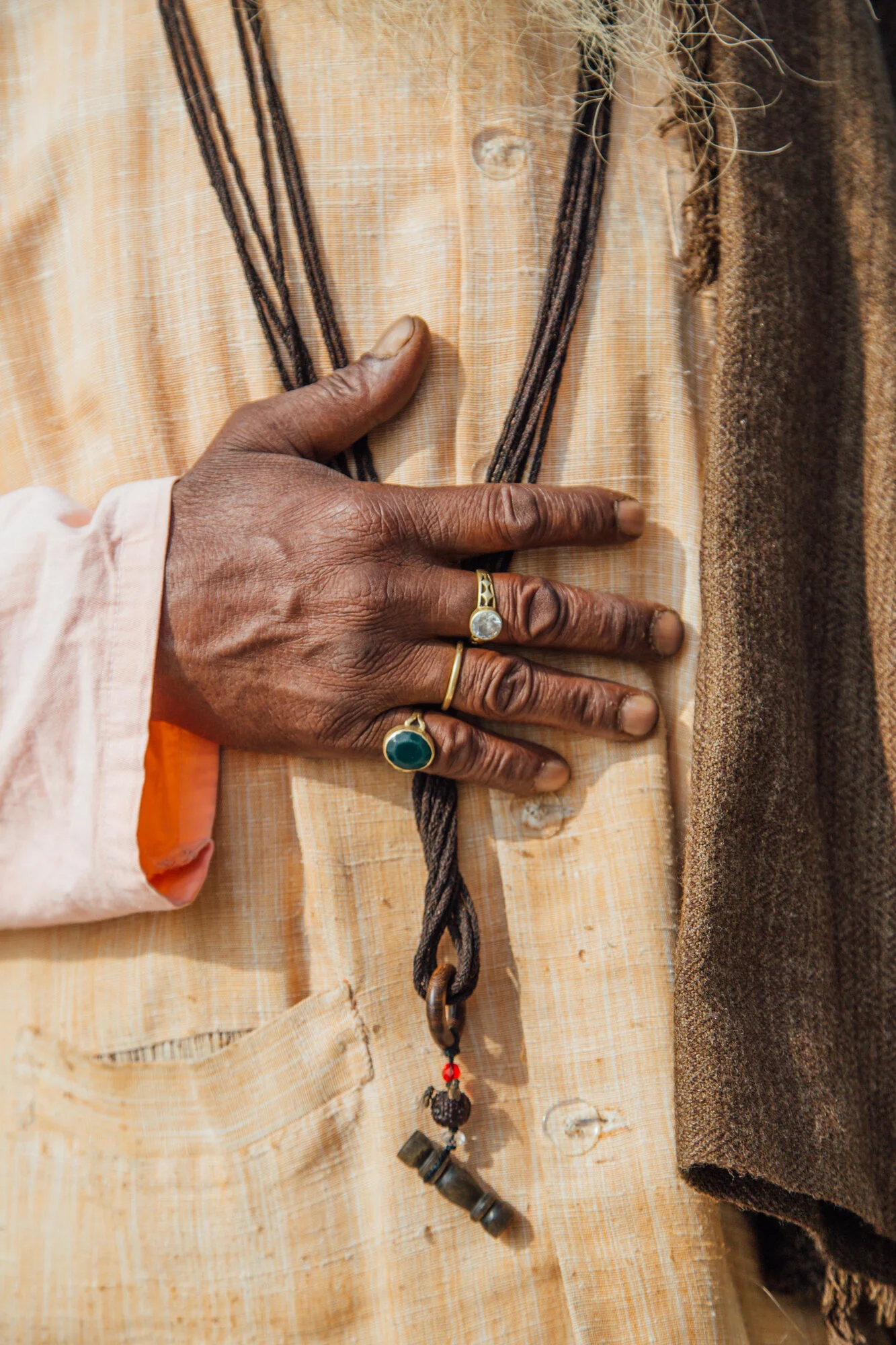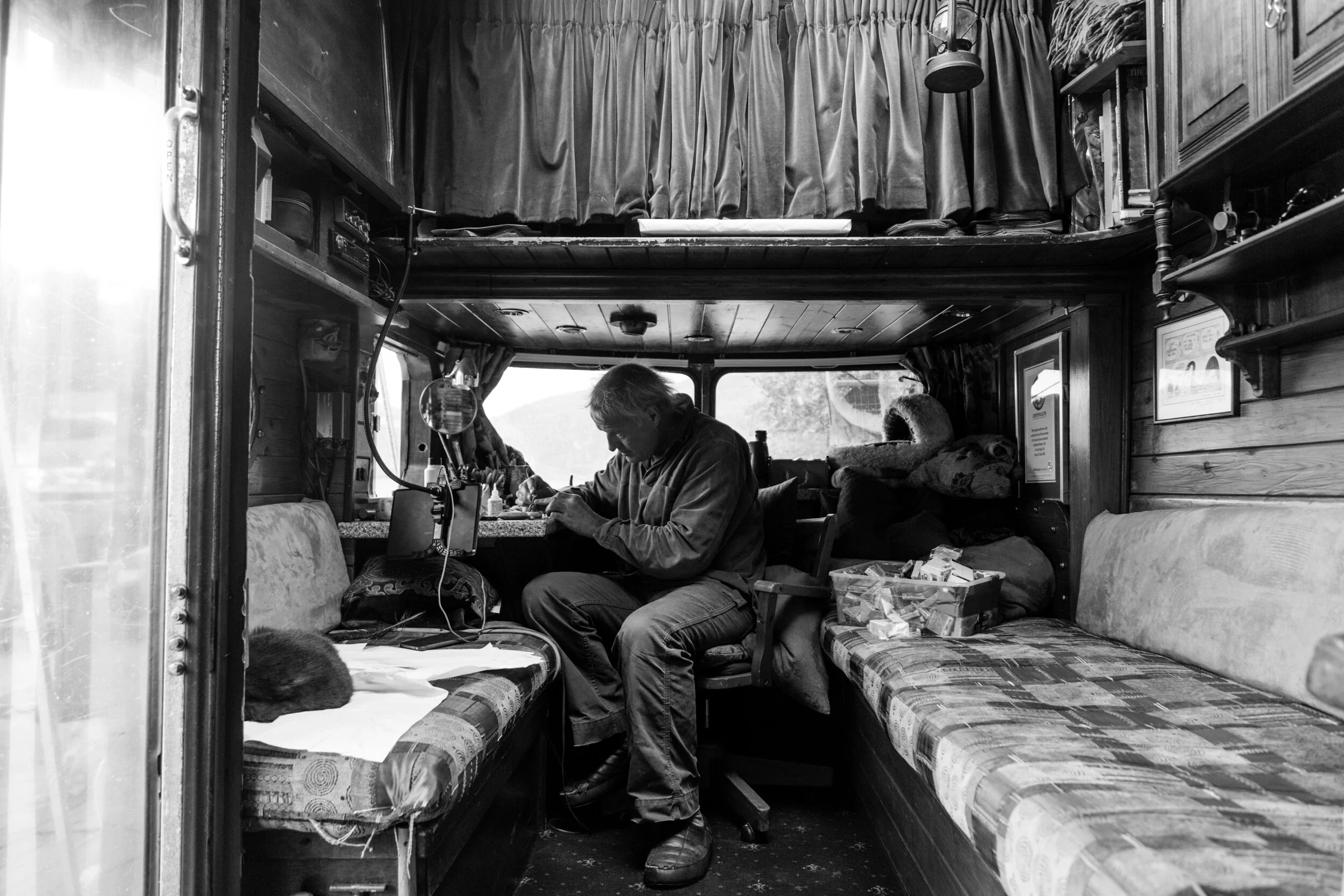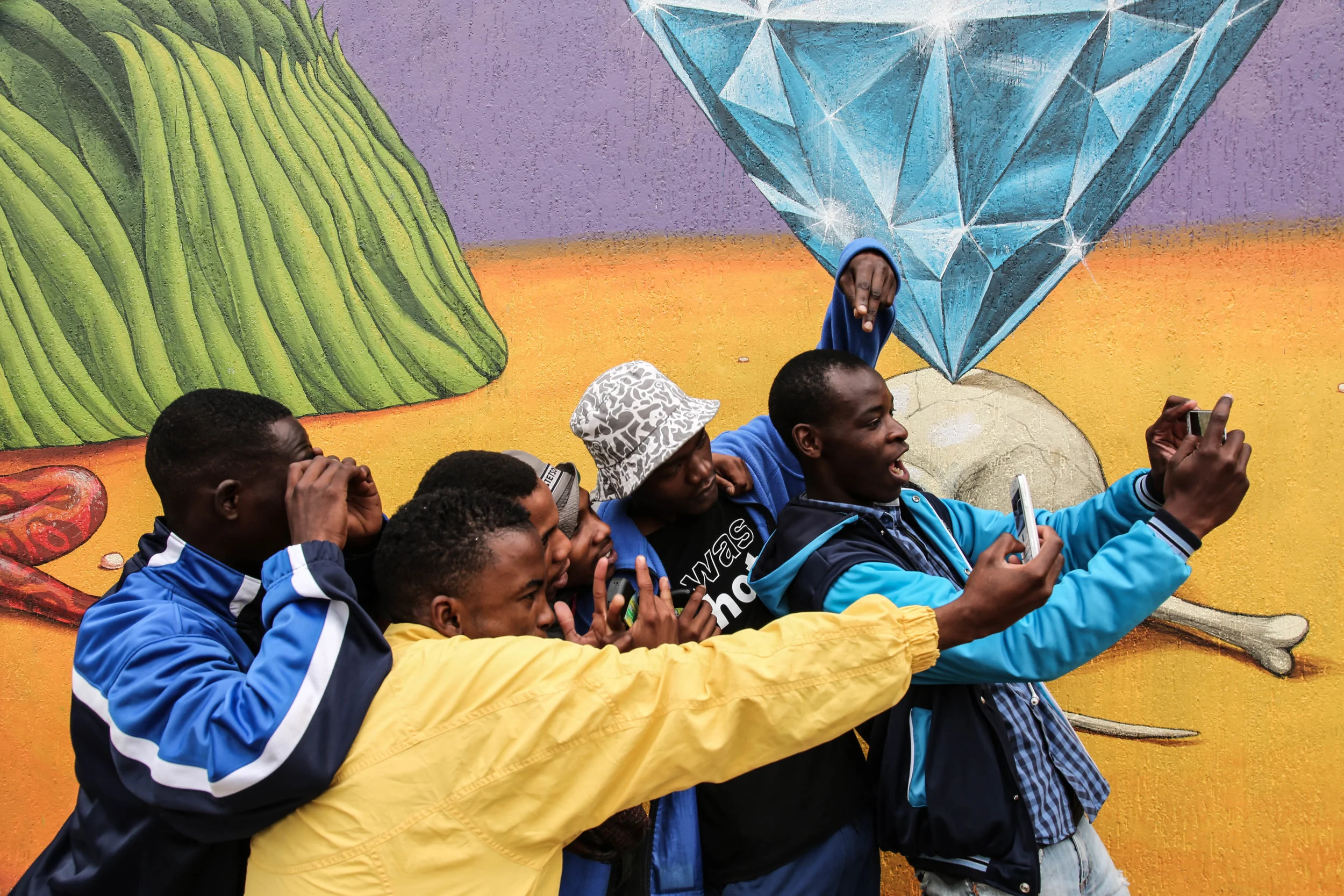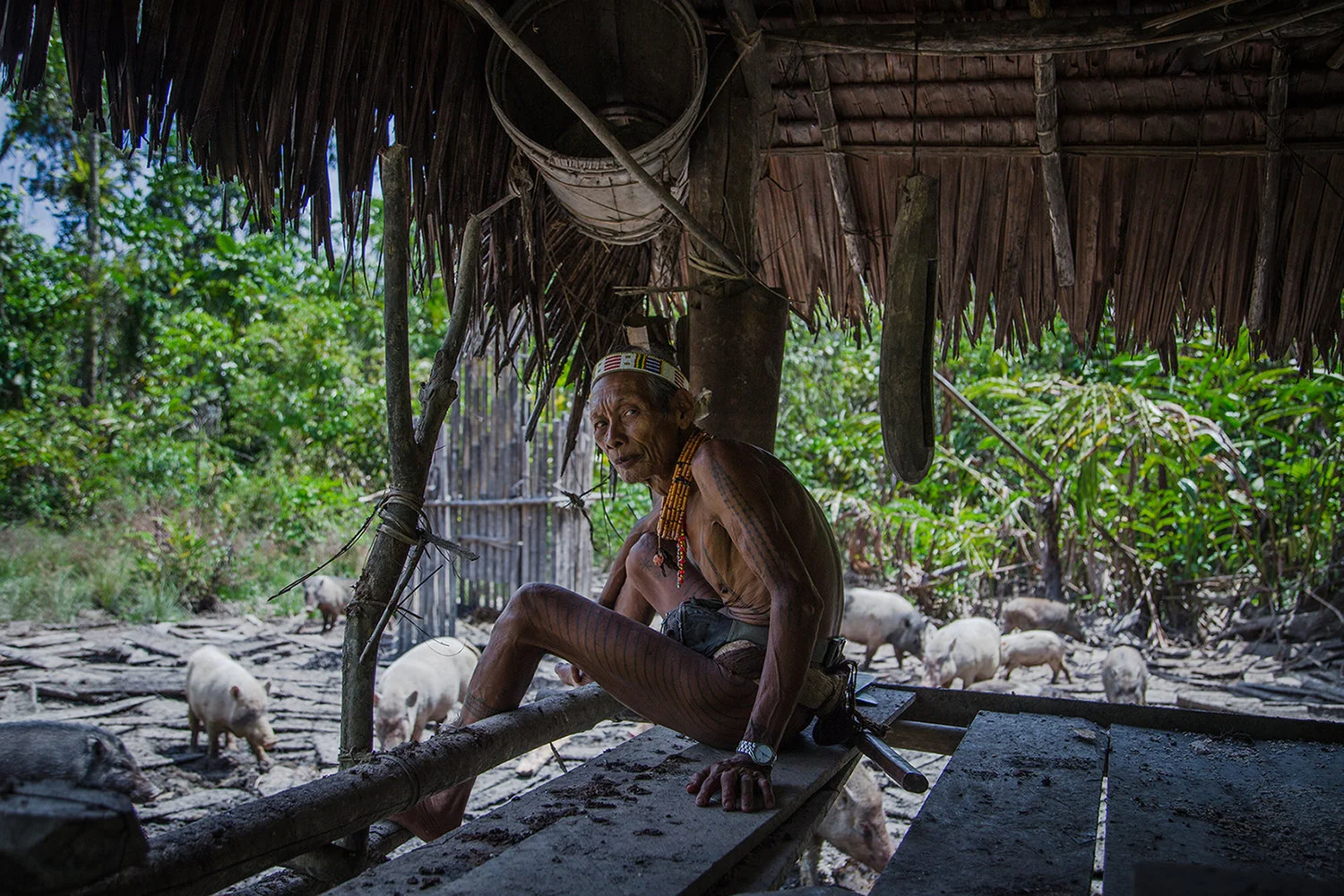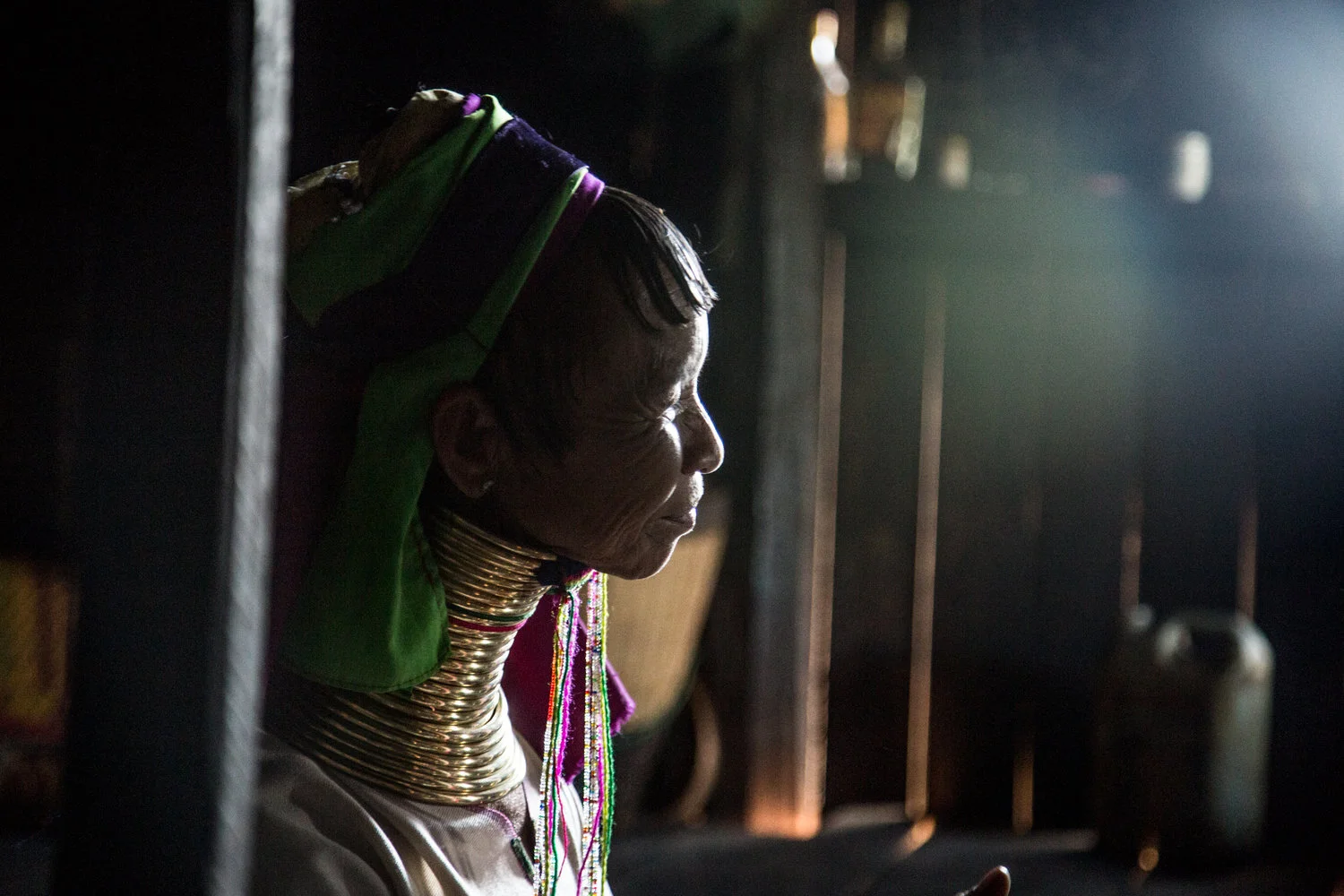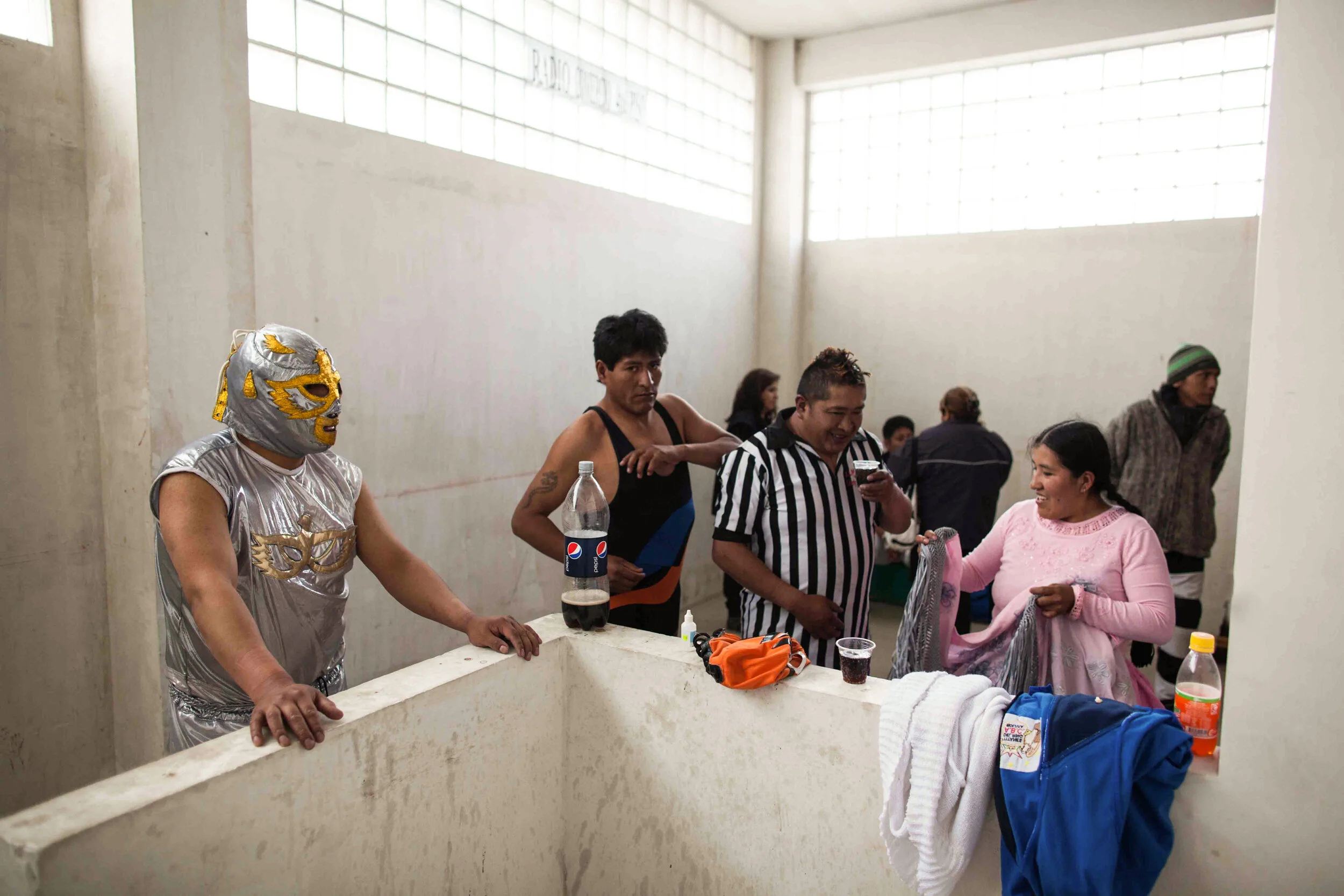VOLCANO HORSES
FEATURE Nº4
THE UNTOLD STORY OF BROMO HORSES AND VOLCANO GODS
By Fraser Morton
Johnny is a special 10 year old. Achingly good looking, smart, a little boisterous and has a sixth sense – he knows when a volcano will erupt.
He’s one of 500 horses that live and work in the shadow of Mount Bromo, East Java, one of Indonesia’s most active volcanoes.
“Johnny will start to gallop around. He will rear up on his hind legs and make lots of noise,” his master Suwandi says, puffing on a clove cigarette just a few hundred metres from the volcano.
For Suwandi and the rest of the 90,000-strong Tenggerese tribe that live in the mountain villages surrounding Mount Bromo, they believe the horses have a bond with their most sacred site and the spirits that dwell in the crater.
Johnny, 10, is one of 500 volcano horses at Mount Bromo, East Java.
The horses are engrained in all aspects of Tengger life. Johnny doesn’t only carry tourists across the Sea of Sand and on mountain tours in the region. Although that is his most profitable job.
Suwandi also uses Johnny’s feaces for fertilizer for his onion farm, his raw strength for food cultivation and also for transport between the 30 villages in the region.
Johnny isn’t just good looking. He’s also extraordinarily strong, which these small, stout horses need to be to keep up with their daily chores.
“I feed him 20 eggs a day to keep his strength up,” Suwandi says, showing us the eggs shells outside Johnny’s stable later that afternoon.
A view into the crater of Mount Bromo during heightened volcanic activity.
It’s hard to imagine a time when they didn’t roam these fertile mountains. But they have been here for a blink of an eye. A mere 200 years in the Bromo caldera’s million-year-old history. Originally, used for transport, today tourism is the commodity of the time.
The devout Hindu Tengger tribe, meanwhile, have been here since the 15th century, retreating to the mountains to protect their faith as Islam spread across Java.
The Bromo land where the horsemen ply their trade is owned by their spirits. The Tengger fuse Animist and Buddhist beliefs with their faith. The steaming Bromo crater is their spiritual temple and place of worship. Each year at the Yadnya Kasada festival, Johnny and the other horses carry hundreds of worshippers to the volcano where they watch animal sacrifices - goats and chickens - being hurled to a fiery death for the crater gods to feast on.
Horseman Mrndik Suwandi, 45, calls his father – also a horseman – from Johnny’s stable.
For the horsemen, eruptions aren’t natural events, they’re spiritual. And they believe the horses sense this, too.
“Johnny is the first to know when the spirits are angry and Bromo will cough,” Suwandi says.
Living in the shadow of a temperamental volcano is dangerous. The Tenggerese are used to it. But they are vigilant.
“Safety here is very important. That’s Johnny’s job here. To warn us all. Otherwise, everyone suffers,” Suwandi says, fixing Johnny’s saddle, another cigarette clenched between his teeth.
A coughing or erupting Bromo is bad for business. Tourists retreat to the mountains past an exclusion zone. The Sea of Sand becomes off limits, the National Park shuts down, and Johnny and the other horses are put to work in the fields. There’s always work for Johnny.
Johnny and Rocky wait on the Sea of Sand in the shadow of Mount Bromo.
Johnny warned his master before the 2011 deadly eruption, Suwandi says, as he points to the smoking 2,300-meter crater behind him. And most recently in December when Bromo began spewing think black ashclouds 3,000 metres into the sky, Johnny told his master beforehand.
Johnny’s future is certain. He will live out his days here with Suwandi. He’s young and strong. There are hundreds, maybe thousands, of journeys across the Sea of Sand plateau ahead of him. Ferrying people he doesn’t know speaking languages he’s never heard. The tourist herd.
Life choices are limited for Johnny. A beautiful beast bound to a master and a volcano. He’s a workhorse, and workhorses work.
Maybe Johnny can retire early. Father a foal or colt and rest easy up on Suwandi’s onion farm. Ask Johnny but there’s no reply. Only a stare from those big black eyes. The only person he’s speaking to is the Bromo god.
TEARS OF THE STORM
Rain lashes down. Lightning crackles and thunder grumbles. Johnny stands barefoot and motionless. Raindrops form tears under his eyes. He takes a long, relieving, pee, that froths in the volcanic black sand. In the distance, about half a kilometre away, milky smoke pours from Mount Bromo into the night sky.
Lightning strikes once more illuminating the Sea of Sand plateau. Thunder growls louder this time. Johnny doesn’t move. Even though he’s trained to head for home after dusk makes way for darkness. He remains at his master’s side.
He neighs and shakes off the rain. He whips his tail behind him and stamps his hoofs. It sounds like the volcano is erupting. Any minute out of the darkness huge balls of hot rock and ash will surely rain down from one of Indonesia’s most active volcanoes.
Johnny doesn’t move. He doesn’t make a sound. Just a stare from those big black eyes. He's listening to the volcano god. And he says no danger this time. Johnny the volcano horse knows when to stand his ground.
---
This photo is my favourite of the essay. It's not good technically or good composition, but it took effort to get. The storm was all around and as lightning cracked in the distance I clicked a few frames. Johnny stood motionless, unperturbed. The rainwater on his face looked like he was crying. I think of animals used for hard labour around the world and I imagine Johnny's tears are for them.
